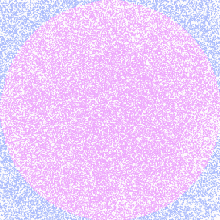Monte Carlo Monopoly

Dr. John Haigh, a mathematics lecturer from the University of Sussex, has found the ultimate strategy for winning at Monopoly: use the help of a computer!
Dr. Haigh wanted to discover which were the best squares to buy and build hotels and houses on. He wrote a program that simulated an enormously long game - more than ten million rolls of the dice - in order to discover which squares players were most likely to land on. While greedy players are tempted to go for the high-rent squares such as Park Lane and Mayfair, he found that the orange squares - Vine Street, Bow Street and Marlborough Street - are the handiest squares to own, because of their proximity to the Jail square.
"Because Go To Jail is the most frequently visited square, you need streets which your opponents are likely to land on when they are released. The orange and red squares are best and the green and light blue the worst, because they are not favoured by their positioning to the jail", he told Michael Fleet of the Daily Telegraph.
Dr. Haigh has recently published a new book, Taking Chances, which is all about using probability in everyday life.
Exploring probability distributions with computer simulation
Dr Haigh's calculations are an example of the application of a general method called the {\em Monte Carlo Method}. This method is sometimes used to calculate a quantity which has an exact value, but which is unknown, by using many random "trials". \par For example, suppose we want to know

Random dots falling inside (pink) and outside (blue) a circle.
Another famous example of the Monte Carlo method is to calculate